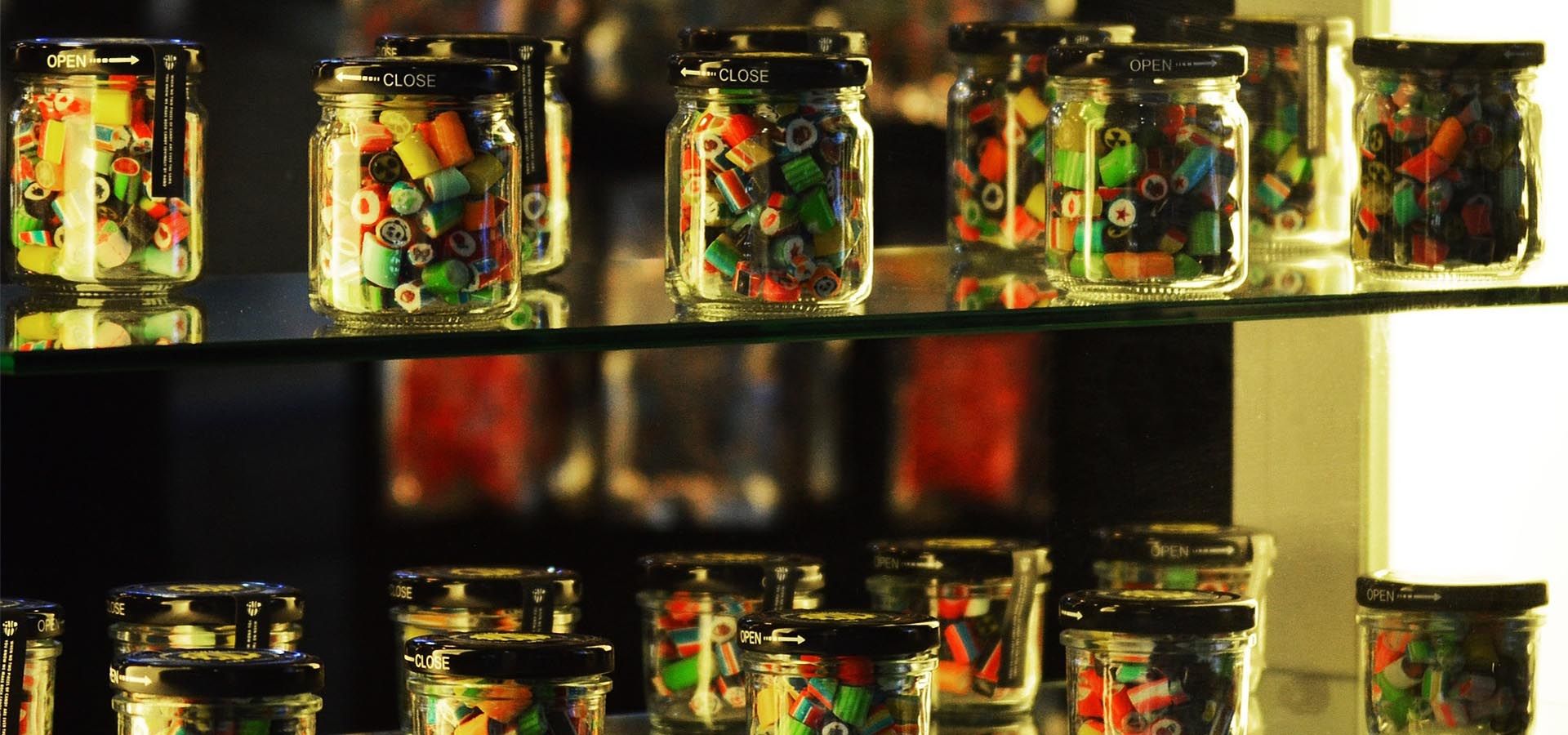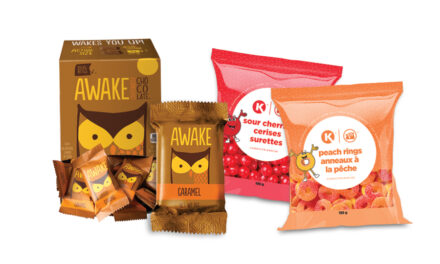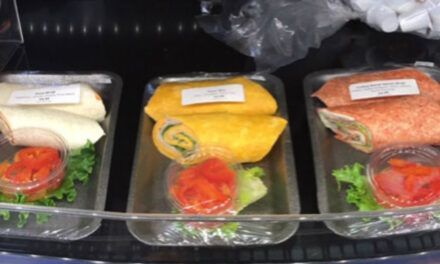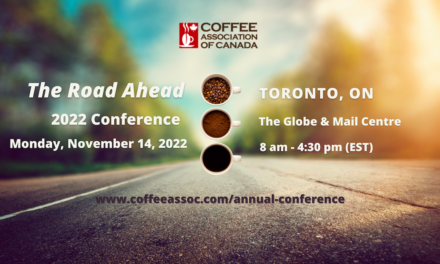
Consumers make Confectionary Purchases

Consumers make confection purchases on impulse
by: Angela Altass
Confectionery may have seen some changes in recent years but it is still that little treat that is often an impulse purchase.
“Convenience stores are a confectionery destination and the category is usually seen as very profitable,” says Eric Longval, vice president of sales, Mondoux Confectionery Inc.
Confectionery consumption has been relatively stable, says Longval.
“Corporate confectionery buyers are pushing in the direction of healthier confectionery options, but consumers are still looking to indulge and enjoy their favourite treats without compromising on taste,” comments Longval.
Gluten-free, good tasting confection is a trend that Longval says he sees evolving in the sugar confection segment.
“The non-chocolate segment, or sugar confections, has been showing above industry standard growth due to large format offerings and assorted gummy mixes,” says Longval. “The Sweet Sixteen 400 g is a perfect example of this growth. Assorted mixes and larger sizes grew faster than the rest of the category. Having re-sealable containers – bags or cups – is important.”
Consumers are looking for recognizable brands, quality flavour, texture and value, says Longval. Fun and colourful packaging is also key, he says. Mondoux Confectionery Inc. is launching YOWIE in Canada.
“YOWIE is an international, educational, collectible and premium chocolate offering,” explains Longval. “This confectionery product has gone viral around the world. It is a character moulded 28 grams chocolate inclusion product. The chocolate is foil wrapped with one of six vibrant YOWIE character foils designed specifically for strong retail shelf presence and in-store impact.”
The YOWIE chocolate encloses a character-shaped capsule with a limited edition natural replica animal, or YOWIE playmate, inside.
“Each carefully crafted, scientifically accurate YOWIE playmate comes complete with an information leaflet profiling the animal, its’ habitat, food sources, and threats to the animal and its’ environment,” says Longval. “Each animal’s conservation status is colour coded as critically endangered, endangered, vulnerable, near threatened or not threatened. They are designed to collect, swap and share in order to complete a collection series.”
Purchasing candy is a fun and self-indulgent consumer outing, says Longval.
“Variety adds to the shopping experience with multiple choices and options but there needs to be a balance of variety while optimizing freshness,” notes Longval. “Try to eliminate me-too offerings and expand on truly differentiated products. We believe there is an opportunity and an appetite for licorice, other than ribbons, such as filled and laces.”
As confectionery is purchased 85 per cent on impulse, locate displays as close to the cash as possible or in high traffic areas, says Longval.
“Make sure the display price is visible and the product display looks fresh,” says Longval. “Avoid sunshine exposure as products may melt and tarnish. In aisle, have the correct balance between peg and shelves. In order to maximize inventory turn, allow at least 50 per cent space to peg.”
Chocolate Offerings
For the 52 weeks ending July 25, 2015, sales of everyday chocolate accounted for 52 per cent of total instant consumption confectionery sales in Canada, according to data from Statista Inc., www.statista.com.
Brand recognition is key for chocolate offerings, says Longval.
“There is a high degree of loyalty in the top 10 to 20 chocolate bars but for sugar confection, consumers quite often purchase by shape, detail and value,” says Longval.
The chocolate confectionery category is all about display, says Chris Jones, category shopper development leader – confectionery, Nestlé Canada.
“Chocolate continues to grow three to four per cent every year and continues to play an important role in people’s lives and their meal occasions,” says Jones. “It is the most impulsive category, with 80 per cent of all sales purchased from display, and being an expandable category has tremendous growth potential when executed well.”
For retailers to maximize their valuable display space, floor and counter space should be dedicated to the strongest and fast-turning brands, says Jones.
“As an example, retailers who have participated in displaying Kit Kat on the counter have seen double digit increases in the sales of the number one single bar in the category,” notes Jones.
Confectionery is being influenced by a couple of key trends, says Jones.
“First, 66 per cent of all meal occasions today are snacking with 55 per cent being sweet snacks,” says Jones. “Confectionery products can meet a number of these treat-style occasions through a variety of brands and different formats. Second, millennials represent the largest and growing consumer segment of chocolate consumption occasions. Innovative products that provide new and unique flavour experiences appeal to this cohort.”
Brands are very important in confectionery, says Jones. Nestlé is launching new products from some familiar brands this year: Kit Kat Green Tea and Coffee Crisp Salted Caramel Stix. Rolo Peanut Butter is now available in a share size 68 g bag and Turtles Bites are new mini Turtles, available in classic and salted caramel flavours, that can be consumed in one bite.
“If you were to compare the top everyday chocolate brands or top 10 single bars today versus what it was 15 years ago, you would see a nearly identical list of brands and single bars,” comments Jones. “Canadian consumers love their favourite chocolate products and brands. Flavour and format extensions in many instances have given consumers more opportunities to enjoy their favourite brands in new and exciting ways.”
Consumers are looking for different ways to consume confectionery products that will fit into a healthier lifestyle, says Jones. Nestlé has repositioned its’ king size format into a share size format with portions within bars so they can be more easily shared with another individual or to make it easier to consume a portion of the product in the moment and save the rest for another time.
“Confectionery can fulfill a number of different treat occasions for consumers, with a wide array of brands, flavours and formats to meet specific needs,” says Jones. “Millennials in particular are looking for new and interesting flavours and experiences to try. What is most important is that retailers carry a broad assortment of brands, formats and products that deliver on the excitement and newness that innovation can bring to the category, while ensuring strong representation of consumer favourites.”
Carrying and displaying a variety of confectionery products is very important for convenience stores, notes Jones.
“Consumers have a menu of five to six brands that they will buy and, depending on the meal occasion they are trying to satisfy, will seek out those brands in different formats like a single bar or a pieces product,” says Jones. “Being an impulse category, not having the brand or format the consumer may be craving or would consider buying will result in a lost purchase conversion opportunity for the retailer.”
It is important that whatever space a retailer can dedicate to confectionery be most productively utilized by carrying the top selling brands and products in the category, states Jones.
Sugar and Gum
The sugar and gum confectionery market in North America has been influenced by the clean eating trend as consumers are increasingly making good lifestyle choices, says Mike Cunningham, business development manager, Tree of Life Canada.
“Canadians are watching out for clean labels and caring about what goes into their bodies,” says Cunningham. “Sugar confectionery has traditionally been positioned for indulgence, however, brands are now adapting and evolving to meet consumer desire for a healthier lifestyle.”
Confectionery is also a treat, notes Cunningham.
“It can offer positive attributes like emotional well-being,” says Cunningham. “Brand is important. Consumer decision starts with choosing segment – chocolate, mint, gum – first and then flavour – milk, dark, white – and then brand, followed by size and lastly, price.”
Organic confection products are on the rise, says Cunningham.
“Organic has been an important area of innovation in the last year,” he notes. “This claim has appeared on six per cent of the total launches in the category, increasing by five percentage points compared to the previous year. Millennials are driving fair trade chocolate purchases.”
Displays are key in driving incremental sales, says Cunningham.
“See candy, buy candy, eat candy,” states Cunningham. “Confection is a high impulse purchase category with 59 per cent of the shoppers deciding to purchase after they enter the store. Dedicated merchandising space and advertising as well as out-early displays of seasonal products will increase opportunities for sales.”
In any given month, 34 per cent of consumers buy candy at a convenience store, he says, advising retailers to consider all possibilities of the consumer decision tree, including occasion and pack type, to maximize incremental sales.
“The evolution of candy has changed somewhat,” says Frank Raso, director, business development, Karma Candy Inc. “You find that parents are very conscientious today about what they give to their children. Consumers are looking for healthier options. Dark chocolate fits this trend for healthier candy. It used to be that 20 years ago no one wanted dark chocolate because they wanted the sweeter dairy milk chocolate bar. Now, people are looking for dark chocolate because, with its high content of cocoa, it is a healthier choice.”
Although there have been changes, and people are considering healthier options in their confectionery choices, some things remain constant.
“We continue to develop and look at what we can do with chocolate,” remarks Raso. “Some people put fruit, peanuts, or Rice Krispies in it, but, at the end of the day, it’s chocolate and it’s the food of the Gods. That doesn’t change.”


































